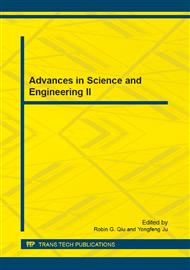p.989
p.995
p.1002
p.1007
p.1013
p.1020
p.1027
p.1037
p.1044
The Control System Model of Gantry Crane for Preventing Swing
Abstract:
This paper aimed at the phenomenon of swing which caused by inertia force and outer loads when gantry crane worked, the dynamical equation and state space equation were founded based on Lagrange, analyzed the swing phenomenon by LQR linearity secondary optimal control method, and simulated the equation by MATLAB software, through the results, the conclusion can be got that this method could reduce time for crane swing and improve the precision of orientation and working efficiency, this method had important meaning for improve the security and working efficiency for gantry crane, which can be extended to other crane too.
Info:
Periodical:
Pages:
1013-1019
Citation:
Online since:
October 2011
Authors:
Keywords:
Price:
Сopyright:
© 2012 Trans Tech Publications Ltd. All Rights Reserved
Share:
Citation:


